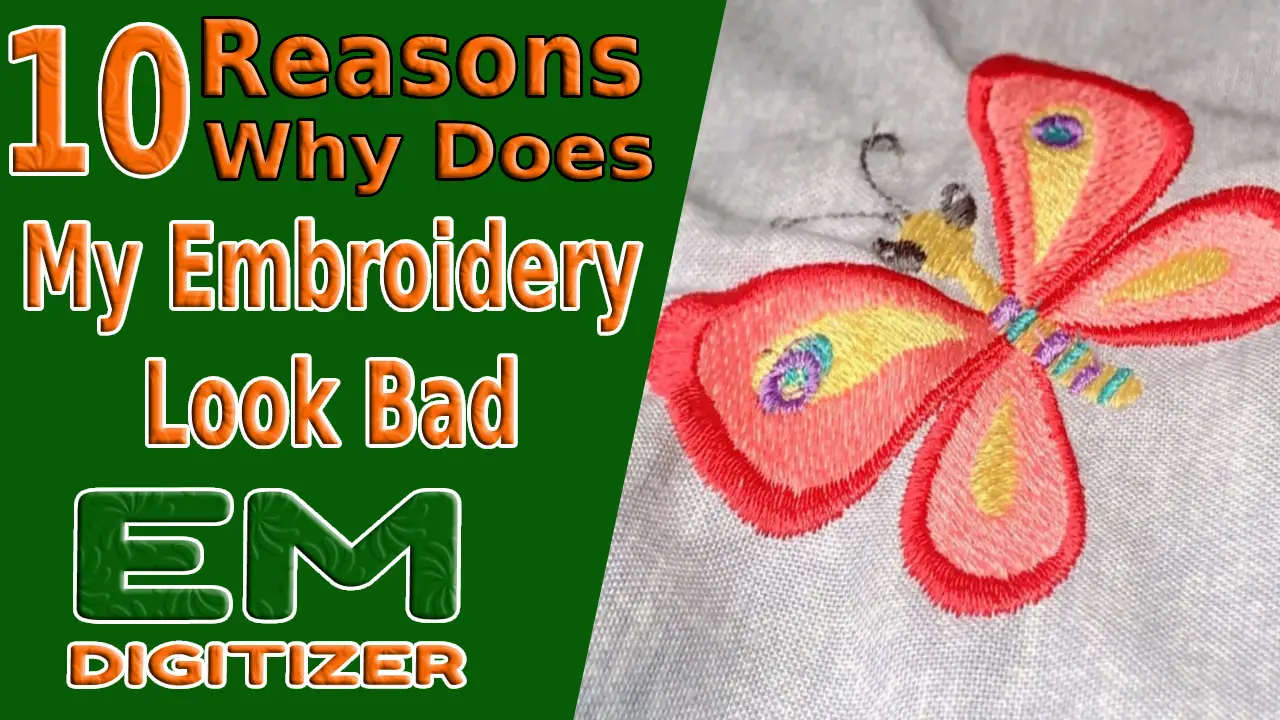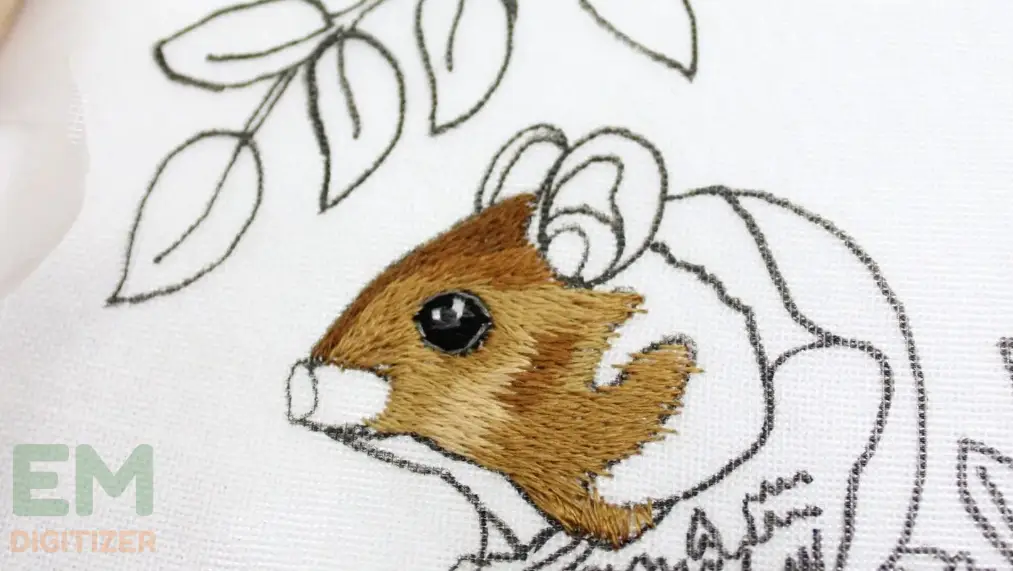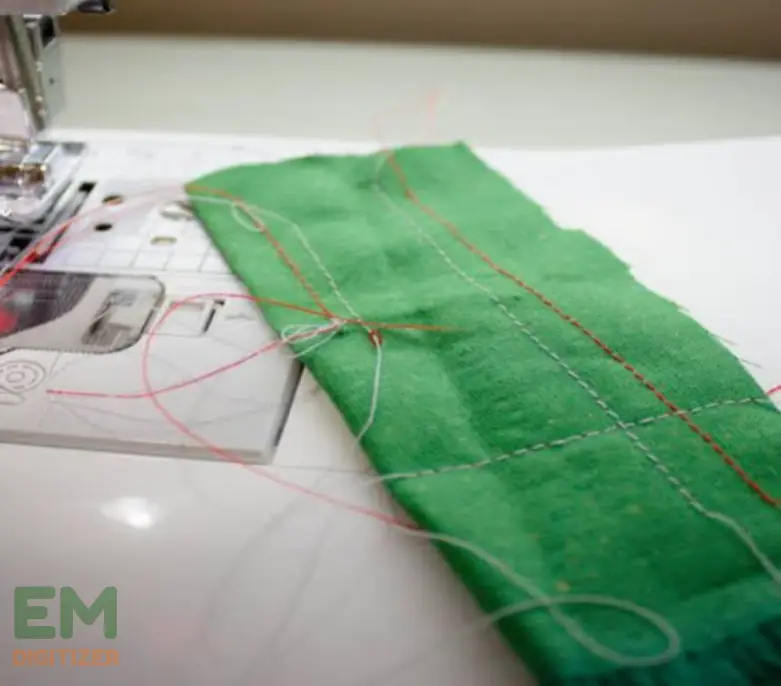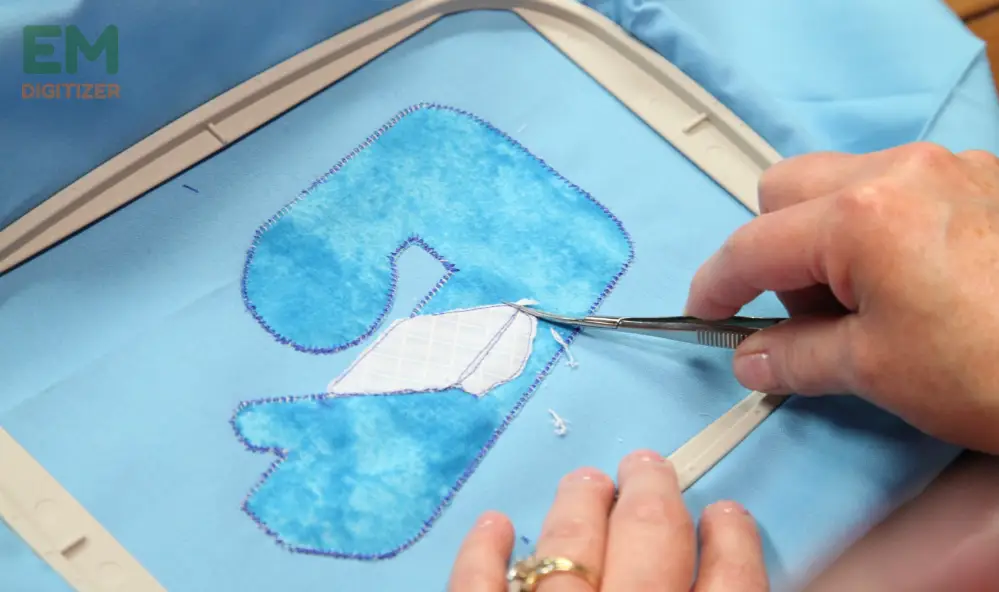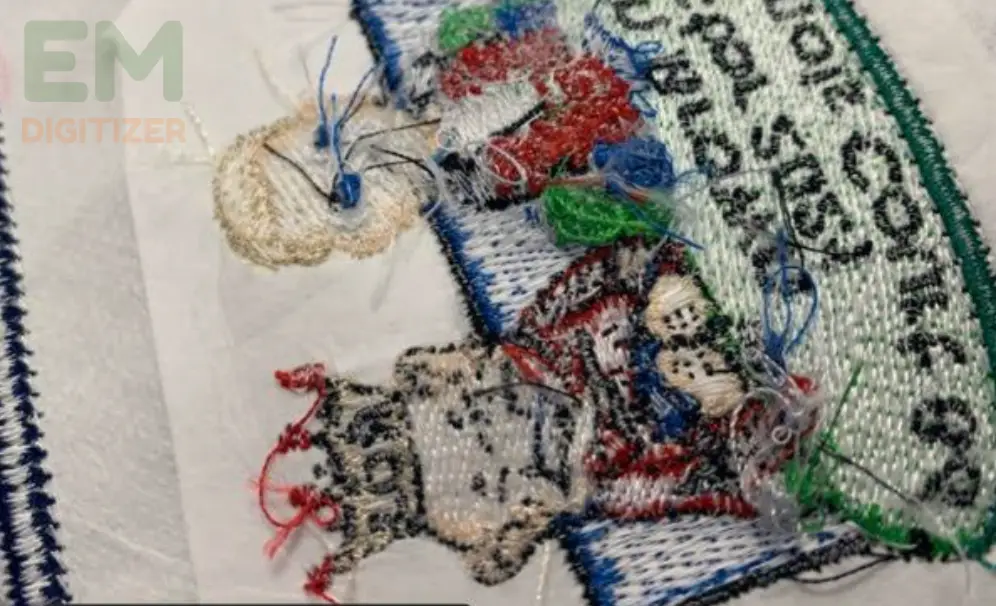You can show your artistic abilities through the art of embroidery. Sometimes, even skilled stitchers have projects that don’t go as expected.
Table of Contents
ToggleIf your embroidery is looking less than perfect, don’t worry – it’s all part of this process. Here are the typical causes of poor-looking embroidery and solutions for each problem.
Embroidery Digitizing Services
If you are looking for embroidery digitizing services, EMDigitizer is one of the best embroidery digitizing companies. Providing all types of embroidery digitizing Services. I recommend you try digitizing services.
Order NowGet Free Quote1- Wrong Design Choice
The design you choose is important for how your embroidered piece will look in the end. Do you ever wonder why your embroidery looks bad? It could be because you chose a design that’s too complicated or not right for the fabric you’re using.
Visit our website to download free, high-quality embroidery designs.
Cluttered or unbalanced designs can result in a messy and chaotic appearance. To overcome this, choose designs that match the texture and thickness of the fabric. This will create a harmonious combination.
Moreover, the scale of the design matters significantly. If your design is too big for the fabric, it may result in a cramped and uneven outcome. This could make you wonder why your embroidery looks bad.
Here is a list of the top embroidery digitizing software. With these programs, you can edit designs without compromising quality.
To solve this problem, measure your fabric carefully. Choose a design size that matches its dimensions. Paying attention to proportion will yield more visually pleasing results.
The design’s colour scheme may affect how appealing it seems as a whole. Choose complementary colours to modify the embroidery’s creative value.
2- Poor Thread Tension
Improper thread tension often leads to the question, “Why does my embroidery look bad?” The quality of your stitching depends on balancing the upper and lower threads in your embroidery machine.
Unsatisfactory results may occur if this equilibrium is thrown off. Improper thread tension can cause various problems, like puckered stitches, uneven fabric, and loops on the surface.
To fix this problem, begin by checking the manual for your machine. It will have instructions on how to adjust the thread tension. Most machines have dials or settings that allow you to fine-tune the tension.
If you want to learn about machine thread tension and avoid any problems, visit the blog.
To change how people see art, try using scrap fabric and making small changes until you find the perfect balance.
Make sure to clean the tension discs of your machine and thread the thread carefully through all the required guides. It will help keep the quality of your embroidery from fading.
3- Uneven Stitches
“When people ask why their embroidery looks bad, a common answer is uneven stitching. This refers to stitches that are either too tight or too loose.”
The design looks uneven and irregular, which quickly catches the eye and creates a sense of inconsistency.
To avoid skipped stitches, it’s important to understand why they happen. This is crucial for the following reasons.
This disrupts the way it looks, making your embroidery appear bad.
Uneven stitching can result in extra fabric, causing puckering or gathering. It gives the design a scrunched-up, sloppy appearance.
When you don’t sew accurately, it makes your work look messy instead of nicely done.
To achieve high-quality embroidery that looks pleasing and professional, it’s important to master consistent and even stitching.
4- Puckering Of Fabric
If your embroidery doesn’t turn out as you want, one reason could be the fabric puckering. This might make you wonder, “Why does my embroidery look bad?”.
The fabric’s wrinkles around the stitches make the clothing look uneven and not nice.
The material can also stretch too much or not be held securely when there’s an unbalanced pressure between the weave and stitches. This can lead to puckering.
Discover the best technique to prevent puckering for great results.
Additionally, when fabric pops, it can make your work look worse. This happens because it affects the stitch’s softness and distorts delicate features.
Keeping the right pressure and stability is important for improving your projects’ appearance. You can find the answer to your question. “Why does my embroidery look bad?”.
5- Ignoring Fabric Features
Ignoring the qualities of the fabric might produce unpleasant effects. Sometimes, we may wonder why our embroidery doesn’t look good. This can happen when we forget about the unique aspects of the clothes we’re working on.
Because of their weaves, thickness, and stretchiness, multiple fabrics demand distinct handling techniques.
Explore the best embroidery fabrics and their use for various projects.
Using the wrong fabrics can cause thread to break, which is why my embroidery looks bad.
When you don’t think about how heavy or textured the fabric is, it can be harder for the needle to go through it.
Here are a few tips to help you prevent metallic thread breaks and achieve better finish results.
This friction can cause threads to break often. This interrupts the process and makes your design look unfinished and flawed.
In some cases, overlooking fabric characteristics might even lead to colour bleeding. Fabrics that react to water or moisture can cause dye migration. This can result in colour bleeding that stains the surrounding areas of your design.
To prevent embroidery mistakes and answer the question “Why does my embroidery look bad?”, it is crucial to carefully analyze the chosen material.
Looking for affordable and quality fabrics to buy online? Here are some top stores to check out.
Take into account its texture, stretchiness, and any special features. Customize how you do embroidery by choosing the right stabilizers and techniques that match the fabric you’re using.
6- Incorrect Stabilization
Insufficient stabilization can be a key reason why my embroidery looks bad. Without proper stabilizing techniques, fabric tends to shift during stitching, leading to misalignment.
Elements may not line up as intended, resulting in an unattractive appearance. Inadequate stabilization causes the fabric to curl and warp, which results in an unprofessional finish.
Check out this blog for detailed info on the top machine embroidery stabilizer!
Moreover, when the threads tug or twist the fabric, it can lead to uneven stitches and a messy look. To ensure your work looks good, learn how to stabilize it properly. This will keep everything well-aligned and visually pleasing.
7- Using Wrong Stitches
Making the wrong stitch choice can greatly impact the outcome of your embroidery. This is often the cause of why your embroidery may not turn out well.
The type of stitching you choose affects how the design looks and how long it lasts.
Improper stitches can make the design unclear and messy, losing its detail and creating a cluttered look.
Using dense stitches on thin materials can make the problem of “Why does my embroidery look bad?” worse, causing pinching.
Using the wrong stitches for a design can make it look messy and unfinished.
Think about the ideal texture, level of detail, and fabric nature. Before you begin the project, try different stitches on a spare cloth to make sure you achieve the desired results.
To learn more about underlay stitches for embroidery and digitizing, click here.
8- Improper Hooping
Your embroidery’s quality might be severely affected by improper hooping. If the material is not secure, it can pucker, wrinkle, or make the pattern misaligned.
ImproveShow HardEmbroidery can look messy and unprofessional if not done properly. It may also get distorted if the fabric shifts while stitching. This can make the final result look uneven.
To solve these issues, ensure the fabric is hooped tightly but not stretched. Use stabilizers appropriate for your fabric type and design complexity.
Check out these top embroidery hooping tips to make your workflow more efficient.
Proper hooping aids in maintaining design alignment and prevents fabric movement during stitching. Adequate tension and even pressure across the hoop are essential to avoid distortion.
Improving your embroidery is possible by practising proper hooping techniques. This can help address why your embroidery may have looked bad before.
For easy and error-free setup of your echidna hooping system, click here for more details.
ImproveShow Hard
9- Lack Of Embroidery Skills Development
Not practising enough makes it hard to get good at embroidery. This leads to stitches that aren’t even and tension that’s all over the place.
Regular practice is important for developing muscle memory and precise hand movements. Without it, lines may appear jagged and designs may be wobbly.
Novices often have trouble placing the hoop correctly and getting the fabric tension right. This can lead to distortions and make their embroidery look bad.
Practising your skills helps you sew more accurately, so you have fewer mistakes that can ruin your final project.
ImproveShow HardTo be proficient in various stitching styles, you need practice to create smooth curves, sharp angles, and consistent fills.
Neglecting practice makes it hard to fix thread tensions, causing puckering or bunching.
Improving your skills helps you select the correct stabilizer and thread for different fabrics, preventing unwanted pulls or puckers.
In this blog, we give you strategies to learn machine embroidery.
Mastery of time helps us understand digital design better. It prevents mistakes that can cause distorted or poorly done patterns.
Practice using your embroidery machine to avoid bobbin-related issues that can affect the final look of your work.
Practice helps you improve the pace and rhythm of stitching. This reduces the chances of uneven spacing or rushing.
If you don’t practice your skills, it becomes more difficult to know when the machine or equipment needs maintenance. This can lead to a decrease in the quality of the embroidery.
Practice helps improve attention to detail, making it easier to spot and fix mistakes in embroidery.
If you want to learn how to become a successful embroidery digitizer, visit the blog for step-by-step instructions.
10- Machine Maintenance Issues
“Why does my embroidery look bad?” is often because the machine is not well maintained. Neglecting maintenance affects the embroidery’s appearance due to various factors.
Avoid these embroidery mistakes to improve the quality of your embroidery.
Dirty machine components, such as tension discs, can cause uneven thread tension and result in irregular stitches.
Uncleaned bobbin cases result in erratic thread distribution, causing loops and knots.
Dust and lint buildup can affect the machine’s precision. This can lead to misalignment of designs. Additionally, dried lubrication can cause friction, which results in thread breaks and snags.
Worn-out needles, caused by not replacing them, can ruin clothes. Similarly, if the sensors are not calibrated properly, the colours may not match the patterns correctly.
Dirty embroidery hoops can cause uneven tension, and not cleaning embroidery beds properly can affect the fabric.
Unattended sensor issues can lead to mistakes in stitching and uneven filling. Additionally, if electronic components are overlooked, it may cause problems with the design execution and result in incomplete patterns.
Regular machine maintenance must be done to preserve the standard of projects. To save time and energy, it’s recommended that you follow the blog’s maintenance instructions for the machine.
ImproveShow Hard
Conclusion
The question “Why does my embroidery look bad?” is usually caused by a mix of different reasons. Not enough practice and not taking care of the tools, these problems can all make your project look bad.
To achieve error-free results in embroidery, follow these simple steps: 1. Learn different stitching methods properly. 2. Choose the right fabrics for your project. 3. Take good care of your embroidery machine.
Thread breakage can happen if the needle is dull or has burrs, if the thread is low quality, or if the tension is wrong. Make sure your needle is not damaged. Use good thread and adjust the tension settings if necessary.
When a design is drastically scaled back, it happens. To maintain the size of the design and avoid distortion while sewing, stick to the original dimensions.
Inefficient digitization or design settings might lead to inconsistent stitch density. Make sure the thread density is consistent across the pattern to avoid areas that are too crowded or too empty.
Improve Show Hard To improve your embroidery machine, make sure to practice proper maintenance. Pay attention to details such as thread tension, needle type, and fabric hooping. These factors can greatly impact the final results.
If you have any questions leave the comments or you can visit our social channels for more updates regularly. We provide embroidery digitizing services if you need digitizing services feel free to contact us or email us.

